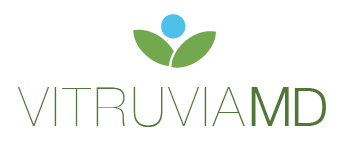When the histamine system is on overload your symptoms can go way beyond typical allergies and is often missed because the usual allergy symptoms like drippy nose is just not present. Signs and symptoms of a histamine overload include:
- Hives, itching, rashes, flushing
- Swelling in tongue or lips
- Trouble breathing, wheezing
- Low blood pressure, passing out
- Cramping, frequent nausea, unexplained diarrhea, continual bloating
- Headache
- Fatigue
And more….
I am seeing this more and more and in EVERY case, they have seen multiple physicians, even had biopsies and this was missed! The good news is there are treatment options.
READ ON to learn more about this not so uncommon histamine issue….
There are two primary type of cells that dump histamine: eosinophils and mast cells. While there are some distinct differences between these two for our purposes, I am going to group them together because they both cause significant symptoms. Eosinophils are primarily thought of in the GI world as causing eosinophilic esophagitis which creates some difficult to treat reflux symptoms. Mast cells can also cause this as well as the multitude of symptoms that I listed above and I suspect eosinophils do too. This is a complex topic to begin with so I will focus on the mast cell portion only.
When you are exposed to any type of allergen (medications, foods, environment), mast cells will release some chemicals that cause an allergic reaction. However, with mast cell activation (MCAS) the switch gets turned on even without the exposure to the allergen and the body is dumping these chemicals all the time. This is why the symptoms are so escalated. There are different reasons why this system is turned on.
- Mastocytosis: there are a few genetic mutations that can make someone more prone to this. You can actually test for this mutation called KIT D816V. This condition is marked by overproduction of the mast cells and is called mastocytosis. Children may have a skin version that only affects the skin. There is a systemic version usually found in adults that these cells can gather in a variety of organs as well as skin. **of note, you can have mastocystosis without the genetic markers.
- Secondary/Idiopathic mast cell activation (MCAS): these are separate conditions. These conditions have activated mast cells meaning they release histamine at increased rates even without stimuli. It’s like a switch gets turned on and you can’t turn it off. There is not a clear cut reason why this system gets activated. I believe one of the most common triggers is mold exposure but lymes and viruses can also be triggers. (Of note, eosinophilic esophagitis often has an underlying cause of mold, lymes or even parasites, too).
Diagnosing this condition is difficult because traditional medicine focuses on only mastocystosis while the majority of cases are just mast cell activation. With mastocystosis, there is an elevated tryptase level and on biopsy the mast cells line up in sheets on special stains. With MCAS, the majority of the time the tryptase is not elevated (although it can be) and there is no sheeting on the biopsy special stains just an elevated number. To make this even trickier, the majority of GI docs do not even order these stains and the pathologists when asked to do them only report if there is sheeting or not. You must ask for a CD117 low alcian blue stain with a mast cell COUNT. Anything above 20 is considered significant regardless of the comments that it is “normal”. If you have had an EGD in the past 3 years you can have your physician add on this stain!
Outside of a biopsy, you have to have a high degree of suspicion. There are a few blood tests that I use to gather evidence but it is definitely reading between the lines adding up all the symptoms and looking at what shows up in blood tests as well as what doesn’t. I use two tests – eosinophil cationic protein (ECP) which tells if your eosinophils have been activated and a gastrin level which is inversely proportionate to the level of histamine in your body. A gastrin below 20 can be indicative of high histamine. You can have normal gastrin and ECP and still have a mast cell issue though.
When dealing with mast cell issues the first step is to stabilize the system and then go looking for a potential underlying cause. Multiple modalities are used.
Step 1: Eliminate offending foods. This will occur in two categories:
- Foods that are a problem for you (food allergies and sensitivities)
- Foods that are high in histamine all by themselves (like fermented foods). Take a look at histamine intolerance syndrome for lists of these foods.
Step 2: Stabilize the mast cells
- Cromolyn & Ketotifen are the prescription medications available
- Quercetin
Step 3: Increase histamine breakdown
- DAO is the enzyme that breaks down histamine. You can take this as a supplement with a meal. Not all people with MCAS have a decreased amount of this enzyme so I tell my patients it is a one bottle’s worth trial. You can measure this enzyme but the supplement is cheaper than the test. This either helps or it doesn’t.
Step 4: Block histamine receptors
- H1 blockers like Allegra, Zyrtec, Zyzal, Benadryl
- H2 blockers like Pepcid AC
Step 5: Decrease reactivity of the system
- Work on Limbic and vagal nerve retraining. These techniques become KEY!! Retraining the brain and the Gupta method are two excellent resources.
And there is even more….
This is not really a DIY issue and is very complicated. What works for someone else may not work for you. Not everyone needs all of these but combinations of various medications and supplements are not uncommon. Once the system is stabilized then looking for underlying causes like mold, lymes, parasites become important. You won’t be able to tolerate a treatment for those until the system is stabilized though so focus on this first.
If you have a whole bucket full of symptoms you might ask the question if this could be MCAS.
To your health,
Laura









